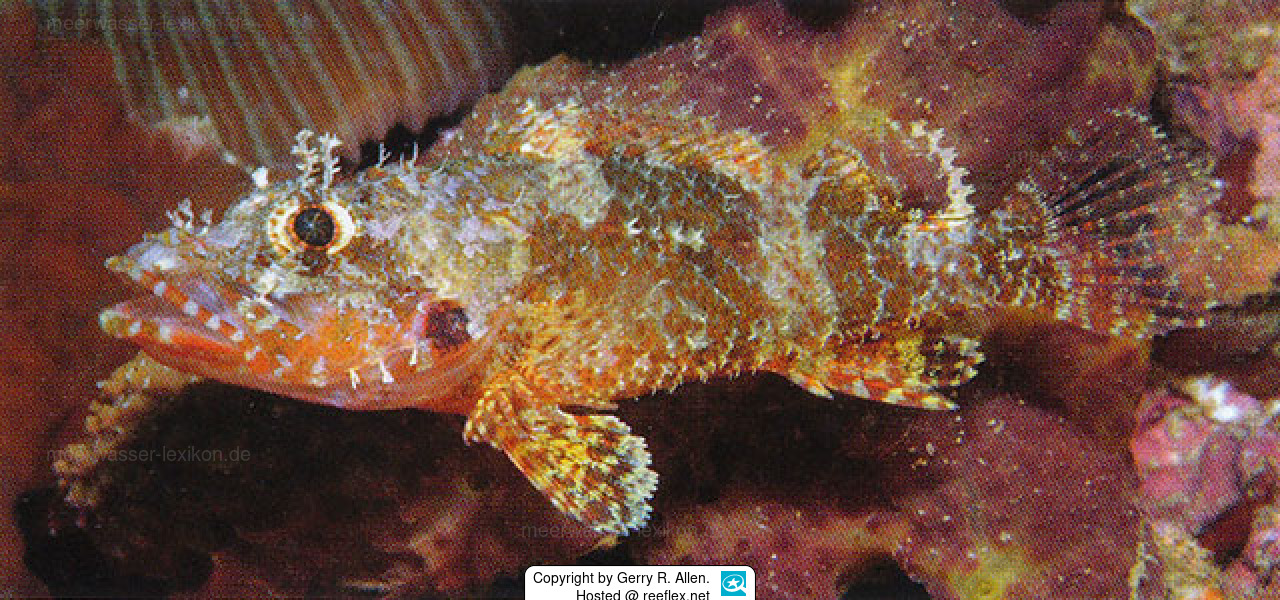Info
Since the small scorpionfish is poisonous, it should not be touched by divers, snorkelers or swimmers.
In case the predator should ever be offered in a specialized trade, then it would only be suitable for experienced keepers (poison), direct feeding should be done with feeding tongs, but the scorpionfish is not suitable for a community aquarium.
On predators live endangered, in this case Scorpaenodes albaiensis is attacked by the endoparasite Sphaeromyxa scorpaena, the parasite nests in the liver of the fish.
Photos of the parasite can be viewed here:
www.researchgate.net
Synonyms:
Hypomacrus africanus Smith, 1958
Hypomacrus albaiensis Evermann & Seale, 1907
Scorpaenodes albainensis (Evermann & Seale, 1907)







 Dr. Gerry R. Allen, Australien
Dr. Gerry R. Allen, Australien
















